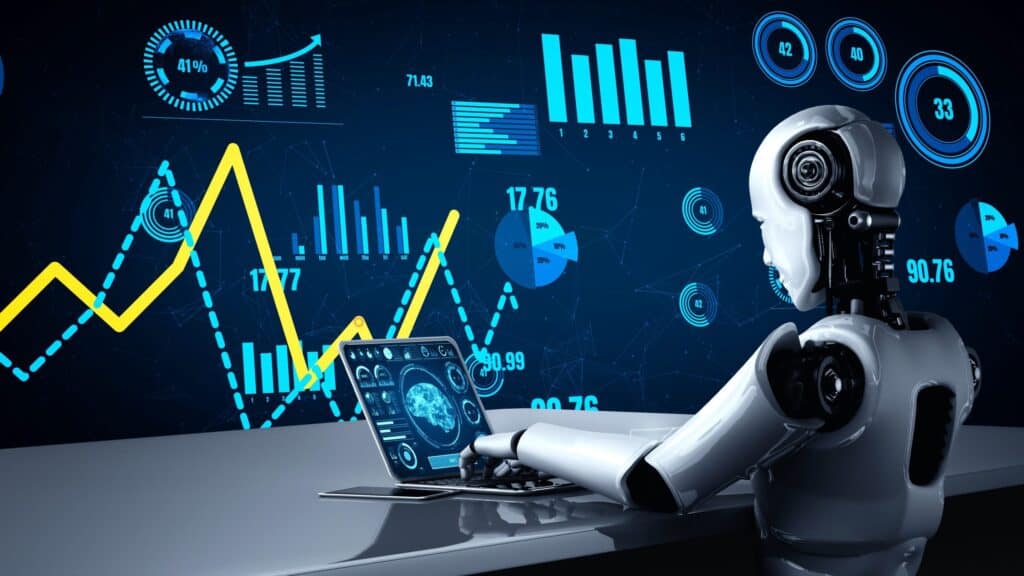Revolutionizing Finance: A Close Look at AI-Enabled Predictive Modeling
Introduction:

The financial services industry has long been synonymous with risk and uncertainty. From navigating volatile markets to assessing loan applications, every decision carries the potential for significant consequences. But what if we could harness the power of artificial intelligence (AI) to gain a clearer picture of the future and make smarter, data-driven choices?
Enter AI-enabled predictive modeling: This revolutionary technology is rapidly transforming the landscape of finance, offering a level of precision and insight never before seen. By analyzing vast amounts of data and identifying hidden patterns, AI models can predict future trends, assess creditworthiness, and even detect fraud with remarkable accuracy.
The Benefits are Real:

The benefits of AI-enabled predictive modeling are far-reaching and undeniable. Here are just a few examples:
- Enhanced Risk Management: By accurately predicting loan defaults, insurance claims, and market fluctuations, financial institutions can mitigate risk, optimize their portfolios, and make more informed investment decisions.
- Improved Customer Experience: AI models can personalize financial products and services, recommend relevant investments, and provide real-time fraud alerts, leading to a more satisfying and secure experience for customers.
- Democratization of Finance: AI can help bridge the gap between traditional financial services and underserved communities. By offering alternative credit scoring methods and personalized financial advice, AI can make financial products and services more accessible than ever before.
A Case in Point:
Let’s take a closer look at a real-world example of how AI-powered predictive modeling is revolutionizing finance. Upstart, a leading online lending platform, leverages AI to assess the creditworthiness of borrowers with limited credit history. Their AI model, known as Upstart Model Q, analyzes hundreds of data points, including education, employment, and even online browsing behavior, to create a more accurate and nuanced picture of each borrower’s risk profile.
The results are impressive: Upstart has been able to reduce loan defaults by 27% compared to traditional credit scoring methods, while simultaneously expanding access to credit for underserved borrowers. This is a testament to the power of AI to make finance more inclusive and efficient.
Challenges and Considerations:
While the potential of AI-enabled predictive modeling is undeniable, it’s important to acknowledge the challenges and considerations that come with its implementation. Issues such as data privacy, algorithmic bias, and explainability need to be addressed carefully to ensure responsible and ethical use of this technology.
The Future of Finance:

As AI technology continues to evolve, its impact on the financial services industry will only deepen. We can expect to see even more innovative applications of AI, such as:
- Automated financial planning and wealth management
- Real-time fraud detection and prevention
- Hyper-personalized financial products and services
The future of finance is driven by data and powered by AI, and those who embrace this revolution will be at the forefront of a more efficient, inclusive, and prosperous financial landscape.
The time to explore the potential of AI-enabled predictive modeling is now. Whether you’re a financial professional, a tech enthusiast, or simply someone looking for a more secure and personalized financial future, I encourage you to learn more about this transformative technology. Take the time to research, ask questions, and engage in the conversation about how AI can revolutionize the way we manage our finances.
Together, we can build a future where data empowers us, AI guides us, and finance becomes more accessible and beneficial for all.




